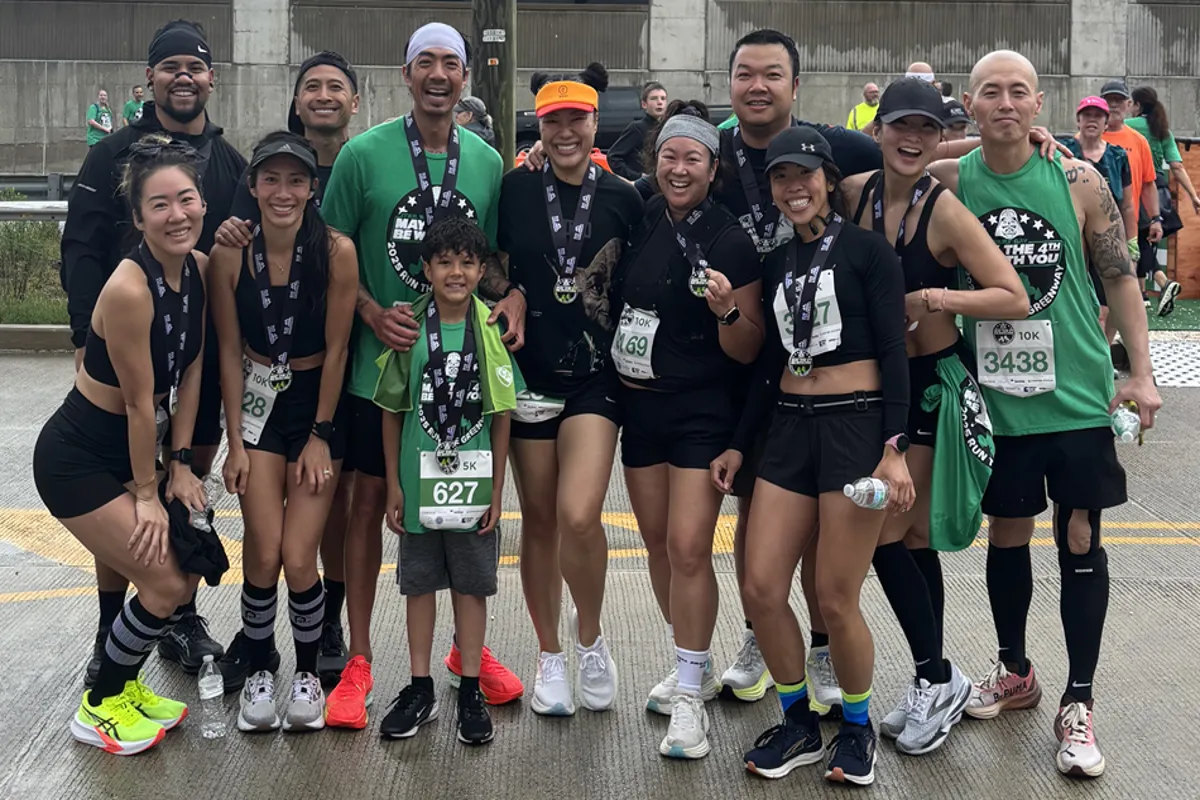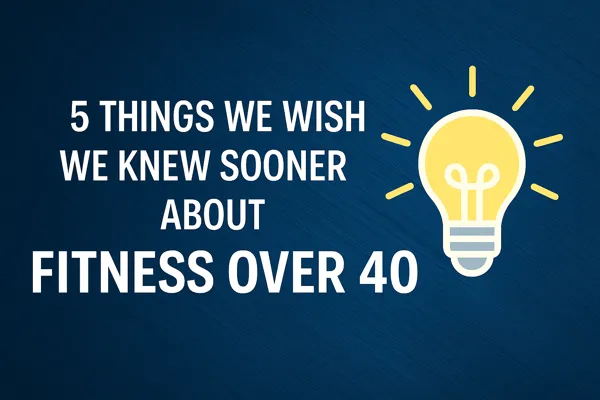When we hit 40, everything changed—but not in the way we feared.
We weren’t out of shape, and we weren’t inactive. We were playing pickleball multiple times a week, getting in occasional workouts, and staying on our feet. But something didn’t feel right. We were sore more often. Our bodies weren’t bouncing back like they used to. We started to notice that we could no longer out-train our habits, and staying “active” wasn’t the same as being fit.
Now, a couple years into a more consistent, intentional training lifestyle, we’ve learned a lot. Some of it the hard way. If we could go back and talk to our 35-year-old selves, here’s what we’d say:
Recovery Takes Longer Than You Think
We started noticing this in our mid-30s—especially after playing pickleball 4–5 times a week for hours at a time. Soreness would linger longer, and our bodies didn’t snap back the way they used to. But we kept pushing through, which only made the soreness worse.
Now, we’re much more intentional. We stretch before and after workouts. We eat cleaner—less processed food, more vegetables, healthy fats, and protein. We still love our desserts and snacks, but we’ve become more mindful of what we put into our bodies.
Sleep is a challenge (parents, you get it), but we’re working on it—turning off screens earlier, taking magnesium, and avoiding late-night meals when we can. It’s not perfect, but it helps.
Consistency Matters More Than Intensity
We’ve definitely been guilty of going too hard, too fast—especially when we first got into running. And we’ve paid the price with strains, soreness, and forced rest weeks.
What we’ve learned is that consistency always wins. Showing up regularly matters more than crushing one big workout and needing five days to recover. We love working out and being active—it’s a part of how we stay connected as a couple. But consistency also takes planning and accountability.
We surround ourselves with friends who have the same lifestyle and values. That makes a huge difference. We’re not perfect, but we try to stick to a weekly rhythm that includes workouts, meal planning, and rest.
Strength Training Is Non-Negotiable
We didn’t avoid strength training on purpose—we just didn’t prioritize it. We figured playing sports and staying active was enough. We didn’t realize how important it is to actively strengthen muscles, not just move them.
As we started running more and playing more pickleball, we felt it—sore knees, weird tweaks, and random aches after long days. But when we added strength training back into our routine, those pains started to go away. Even lifting light to moderate weights made a huge difference.
For Quynh especially, being a smaller Asian woman, strength training helps lower the risk of osteoporosis. And beyond health—it just feels good to feel strong.
Nutrition Hits Different After 40
We’ve always cared about eating well, but we’ve become a lot more mindful in recent years—reading labels, cooking more, choosing higher-quality foods when we can. Our diet now has more eggs, smoothies, good protein (like grass-fed beef and wild salmon), and less of the stuff we used to grab out of convenience.
We’re not extreme—we still enjoy snacks and treats—but we’ve realized that what we eat now impacts how we feel not just tomorrow, but 10 or 20 years from now. We’re also trying to model healthy habits for our kids, so they grow up understanding balance.

Having a Team Makes All the Difference
This is the biggest one: doing it together makes it all possible.
We don’t just hold each other accountable—we actually enjoy working out together. Whether it’s pushing each other to run farther, competing (playfully) over pace or distance, or just reminding each other to get outside and move, it’s part of what keeps our relationship strong.
We also surround ourselves with active friends. We run races together, plan fun outfits, join cycling groups, and try new activities. It’s our adult version of playdates. When you’re around people who care about the same things, fitness becomes social and fun—not just a task to check off.
Final Thoughts
If we could go back and talk to our younger selves, we’d say this: it only gets better from here. Don’t fear your 40s. Embrace it.
You can get stronger. You can go farther. And you can feel better than ever—mentally and physically—if you stay consistent and surround yourself with people who push you forward.
Fitness over 40 isn’t a decline—it’s a second wind.
Thanks for reading. We hope this encourages you to start (or restart) your own journey. And if you’ve learned a lesson or two of your own since hitting 40, we’d love to hear it in the comments.
— Written by Chanh & Quynh • May 20, 2025

